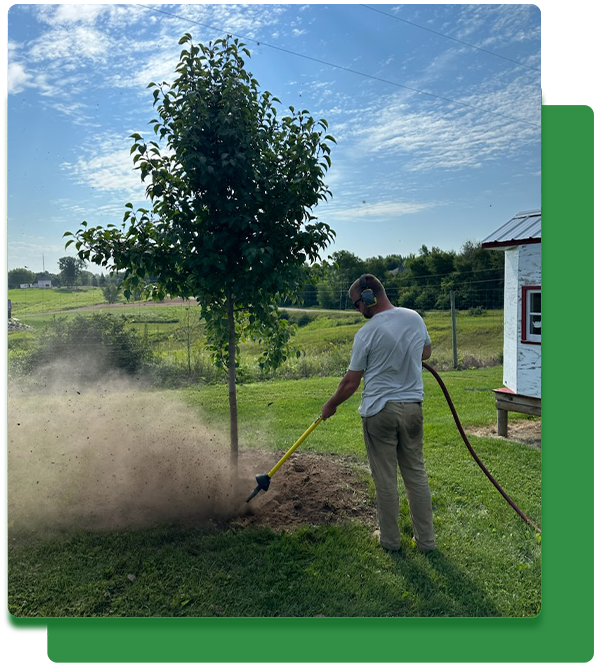
Root Collar Excavation
A full, green tree does not necessarily equate to a structurally sound, vigorous. and healthy tree. At Tree Savvy, we are dedicated to educating the communities about the significance of root health, structure, and integrity – not focusing on what we see above ground alone. Some tree species are known to recover from the loss of their stems and crown, though no species in our temperate forests can withstand the loss of their root systems! Often, if your tree looks sick, it could be a result of poor health in the soil.
Symptoms of poor root health or structure include:
- The lack of a trunk flare (area at the tree trunk base where the roots and trunk come together),
- Swelling above compressed tissues resulting from stem girdling roots,
- Dieback in the upper crown
- Decreased vigor
- Premature fall color, and
- Chlorotic foliage, a common symptom of nutrient deficiency.
With the surplus of poorly planted trees in our communities, we frequently encounter stem-girdling roots. These form when roots develop perpendicularly to the trunk of the tree because of deep planting or a change in grade, in turn limiting the distribution of water and nutrients from the vascular tissues. If your tree lacks a trunk flare and looks like a buried telephone pole, your tree could have stem-girdling roots! To determine if your tree can be preserved, contact Tree Savvy to see if a Root Collar Excavation (RCE/RCX) is the right option.
An RCE is the safe process of removing soil using high pressurized air to expose and assess the root collar/trunk flare of a tree to accurately inspect the condition and stability of the primary structural roots. Tree roots are opportunistic in nature, growing wherever they find the water, nutrients, and oxygen they require to survive, consequently developing asymmetrical forms that are unpredictable in depth or location. Root Collar Excavations, as a result, are unpredictable in their findings and therefore no guarantees can be made on the health and condition of the root systems prior to the inspection.
